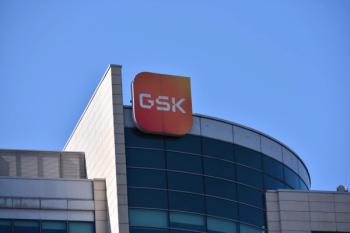
- BioPharm International-04-02-2010
- Volume 2010 Supplement
- Issue 4
Strategies for Optimizing the CMO-Client Relationship
Partner with a contract manufacturing organization that integrates best practices from project management, customer service, and Lean.
Abstract
To ensure reliable delivery and optimize outsourcing costs, it is essential to partner with a contract manufacturing organization (CMO) that uses multidimensional strategies. Older models of project management were not focused on client satisfaction and did not account for the organization's needs. More recent models in project management blend and integrate these objectives. They leverage best practices from different arenas to integrate the needs of the client, project, and business. This article presents a model for conducting work based on three core methodologies: project management principles, customer service, and Lean methodologies.
In this troubled economy, fewer companies are manufacturing their pharmaceutical products in-house.1 More and more companies are working with contract manufacturing organizations (CMOs), or are actively looking for CMOs to partner with. To ensure reliable delivery and optimize outsourcing costs, it is critical that your CMO relationship yields the best possible value to your organization. To achieve optimal results from your outsourcing, it is essential to partner with a company that uses multidimensional strategies, integrating best practices from project management, customer service, and Lean methodologies.
Baxter International
A CMO worth spending your money on must do more than just produce your product. It must serve as an expert partner to help maximize your product's potential. Like any customer, you want the CMO to treat your project with care and commitment. Older models of project management were not focused on client satisfaction, and did not account for the organization's needs. More recent models in project management blend and integrate these objectives. They leverage best practices from different arenas to integrate the needs of the client, project and business. Blending best practices from project management, customer service, and Lean can provide optimal results for clients.
The Role of Project Managers
The role of a project manager at a CMO has evolved to encompass a broader set of stakeholder expectations, including delivering excellent customer service and driving leaner processes. Traditional project management models focused on the success of the project only in terms of the constraints of time, scope, and quality. Today's project managers must deal with increasing complexity and offer their stakeholders the optimal strategy for the project. A systems approach is essential to identify and manage all constraints. Additional metrics must be created and monitored, such as customer satisfaction surveys and measures of process efficiency. When selecting a CMO, consider how facile their project managers are at analyzing tradeoffs among the constraints. Do they have tools and processes in place to provide you with this critical information? If you are considering a process change, will it mean that you won't be able to operate as efficiently down the road? When problems arise, will the project manager address them within the organization, or will they inform you and include you in the resolution process?
Project Management Principles
Not only are biopharmaceutical companies looking for state-of-the-art facilities, reliable quality systems, and technical know-how, they also are looking for CMOs that will manage their projects well. Biopharmaceutical companies must look for CMOs that deploy repeatable project management best practices and processes to drive down project cycle time. They also should look for CMOs that work toward eliminating the "accidental" project manager assignment through training, coaching, and mentoring. This includes development and use of tools, templates, and checklists, as well as establishing metrics to measure performance and risk. Project management certification is one means of assessing an organization's dedication to effective project management. Although certification is not a guarantee of effective project management, it is a positive indicator of organizational commitment to project management knowledge and skills.
Customer Service is Crucial
Customer service is not only about having a pleasant relationship with your CMO partner, it also is about timely communication, effective resolution of issues, response to changes you need, and product delivery when requested. We all know good and poor customer service when we experience it, so what you really need when evaluating a CMO partner is a way to peer into the organization and get a good idea of what your service experience will be like after you sign the contract. There are some recent trends in customer service in the CMO industry that offer you a predictive tool. These include customer service agreements, dedicated project teams, and mutual alignment on objectives and consequences. Service agreements explicitly spell out "how" the client and CMO will work together, while dedicated cross-functional teams consisting of representatives from key functions (manufacturing, technical services, and quality) offer focused and responsive communication for your project.
Leaning on Lean
Lean is a win-win strategy that is customer-focused, while providing cost saving benefits to the organization. As biopharmaceutical companies continue to struggle with increasing cost pressures, regulatory burden, and more challenging drug development timelines, the value of Lean operations and efficient execution has become more important.2–6 Sayer and Williams best summarize Lean as ". . . a philosophy and a proven long-term approach that aligns the business to deliver increasing customer value. It's about focusing people and systems that continuously deliver value to the customer by eliminating waste and deficiencies in the process. Lean is an everyday practice at all levels to perform consistently, as well as to consistently improve performance."6 The logic of Lean methodology echoes what has been stated earlier regarding project management best practices and a focus on customer service. It concentrates on identifying and exploiting shifts in competitive advantage. It encourages individual initiative and the flow of information highlighting defects, operator errors, equipment abnormalities, and organizational deficiencies. Operationally, it standardizes workflow and focuses on problem identification, hypothesis generation, and experimentation in a relentless pursuit for process improvement.
Implementing Best Practices
Table 1 provides an integration matrix of best practices from project management, customer service, and Lean methodology in terms of process, tools, training and development, and sustainability. Below are two examples of how blending these best practices provide optimal results for clients adding value to their organizations.
Table 1. Lean, customer service, and project management integration matrix
A client metric scorecard (Figure 1)—a customer service tool—is part of the daily accountability process (Lean) tracking performance of the client's project and is presented at quarterly client business meetings. The scorecard contains key project metrics important to the CMO and the client, such as on-time delivery, incident rate (exceptions in the manufacturing process), and yield. It is a visual control (Lean) that also satisfies the monitor and control stage of the project, and provides an effective communication tool for customer service. As the client, you can feel confident about how your project is being managed, and you and your CMO have a common understanding of the status.
Figure 1. An example of a client metric scorecard
A risk assessment (Table 2)—a project management process—is done as part of the technology transfer phase of your project. The risk assessment document contains the list of risks, the probability of occurrence, the impact should the risks occur, and the project team response to each risk to mitigate it and build contingency plans. This project management practice identifies potential waste that can diminish value creation (Lean), while it helps manage mutually agreed expectations (customer service). The result is that risks are better managed, so there are fewer issues and costly mistakes in the process.
Table 2. An example of a risk-assesment document (red: risk plan is needed; yellow: consider a risk plan; grey: risk plan completed)
Project managers should leverage best practices from project management principles, customer service, and Lean. This helps integrate the needs of the client, project, and the CMO, focusing on timely delivery of your project to yield the best possible value to your organization.
Raul Soikes is a senior director of program management and Colleen K. Dixon is a manager of project management office, both at Baxter BioPharma Solutions, Bloomington, IN 812.355.5247,
References
1. Reuters. Biopharmaceutical contract manufacturing study finds industry growth over the past two years and expects to continue its growth trajectory. 2009 Jun 10. Available from:
2. Mann D. Creating a Lean culture: tools to sustain Lean conversions. New York, NY: Productivity Press; 2005.
3. Liker JK, Meier D. The Toyota way fieldbook. New York, NY: The McGraw-Hill Companies; 2006.
4. Graupp P, Wrona RJ. The TWI workbook: essential skills for supervisors. New York, NY: Productivity Press; 2006.
5. Shook J. Managing to learn: Using the A3 management process to solve problems, gain agreement, mentor, and lead. Cambridge, MA: The Lean enterprise Institute; 2008.
6. Sayer NJ, Williams B. Lean for dummies. Hoboken, NJ: Wiley Publishing, Inc; 2007.
7. Project Management Institute. A guide to the project: the project management body of knowledge. 4th ed. Newton Square, PA: Project Management Institute, Inc.; 2008.
8. Baxter International. Baxter BioPharma Solutions Process 360. Customer service. Available from:
Articles in this issue
over 15 years ago
Effective Auditing of CMOsover 15 years ago
Process Harmonization Assessments for Technology TransferNewsletter
Stay at the forefront of biopharmaceutical innovation—subscribe to BioPharm International for expert insights on drug development, manufacturing, compliance, and more.





